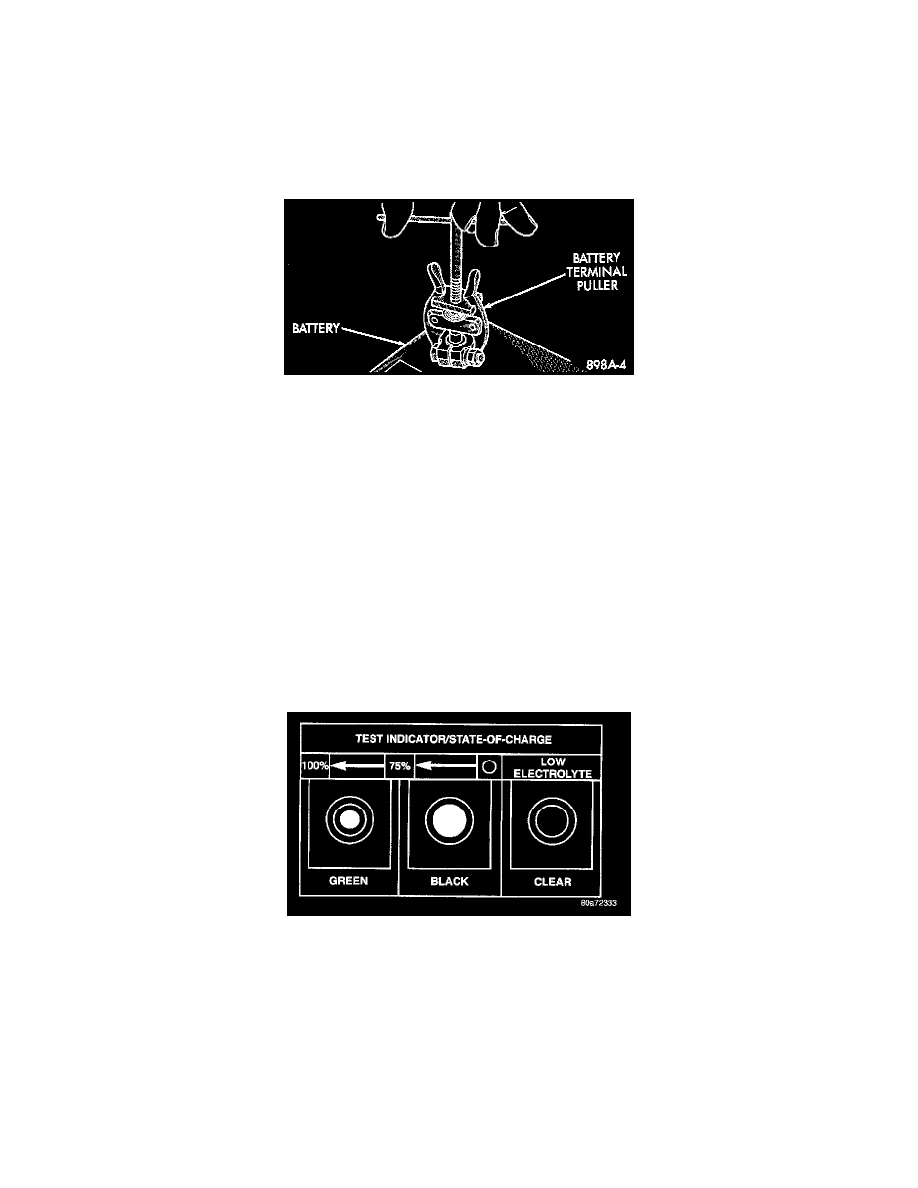Voyager V6-229 3.8L (1996)

Battery: Service and Repair
Battery Charging
WARNING: DO NOT CHARGE A BATTERY THAT HAS EXCESSIVELY LOW ELECTROLYTE LEVEL. BATTERY MAY SPARK
INTERNALLY AND EXPLODE. EXPLOSIVE GASES FORM OVER THE BATTERY. DO NOT SMOKE, USE FLAME, OR CREATE
SPARKS NEAR BATTERY. DO NOT ASSIST BOOST OR CHARGE A FROZEN BATTERY. BATTERY CASING MAY FRACTURE.
BATTERY ACID IS POISON, AND MAY CAUSE SEVERE BURNS. BATTERIES CONTAIN SULFURIC ACID. AVOID CONTACT WITH
SKIN, EYES, OR CLOTHING. IN THE EVENT OF CONTACT, FLUSH WITH WATER AND CALL PHYSICIAN IMMEDIATELY. KEEP
OUT OF REACH OF CHILDREN.
Disconnect Battery Negative Cable
CAUTION: Disconnect the battery NEGATIVE cable first, before charging battery to avoid damage to electrical systems. Do not exceed 16.0 Volts
while charging battery. Refer to the instructions supplied with charging equipment
NOTE: The battery cannot be refilled with water, it must be replaced.
Battery Open Circuit Voltage
Open Circuit Volts
Charge Percentage
11.7 Volts or less
0 %
12.0 Volts
25 %
12.2 Volts
50 %
12.4 Volts
75 %
12.6 Volts or more
100 %
A battery is considered fully charged when it will meet all the following requirements.
-
It has an open circuit voltage charge of at least 12.4 Volts. Refer to Battery Open Circuit Voltage table within Battery Open Circuit Voltage Test.
-
It passes the 15 seconds load test, refer to the Load Test Temperature chart.
Built-In Test Indicator Sight Glass
-
The built in test indicator dot is GREEN.
Battery electrolyte will bubble inside of battery case while being charged properly. If the electrolyte boils violently, or is discharged from the vent holes
while charging, immediately reduce charging rate or turn off charger. Evaluate battery condition. Battery damage may occur if charging is excessive.
Some battery chargers are equipped with polarity sensing devices to protect the charger or battery from being damaged if improperly connected. If the
battery state of charge is too low for the polarity sensor to detect, the sensor must be bypassed for charger to operate. Refer to operating instructions
provided with battery charger being used.
CAUTION: Charge battery until test indicator appears green. Do not overcharge.
